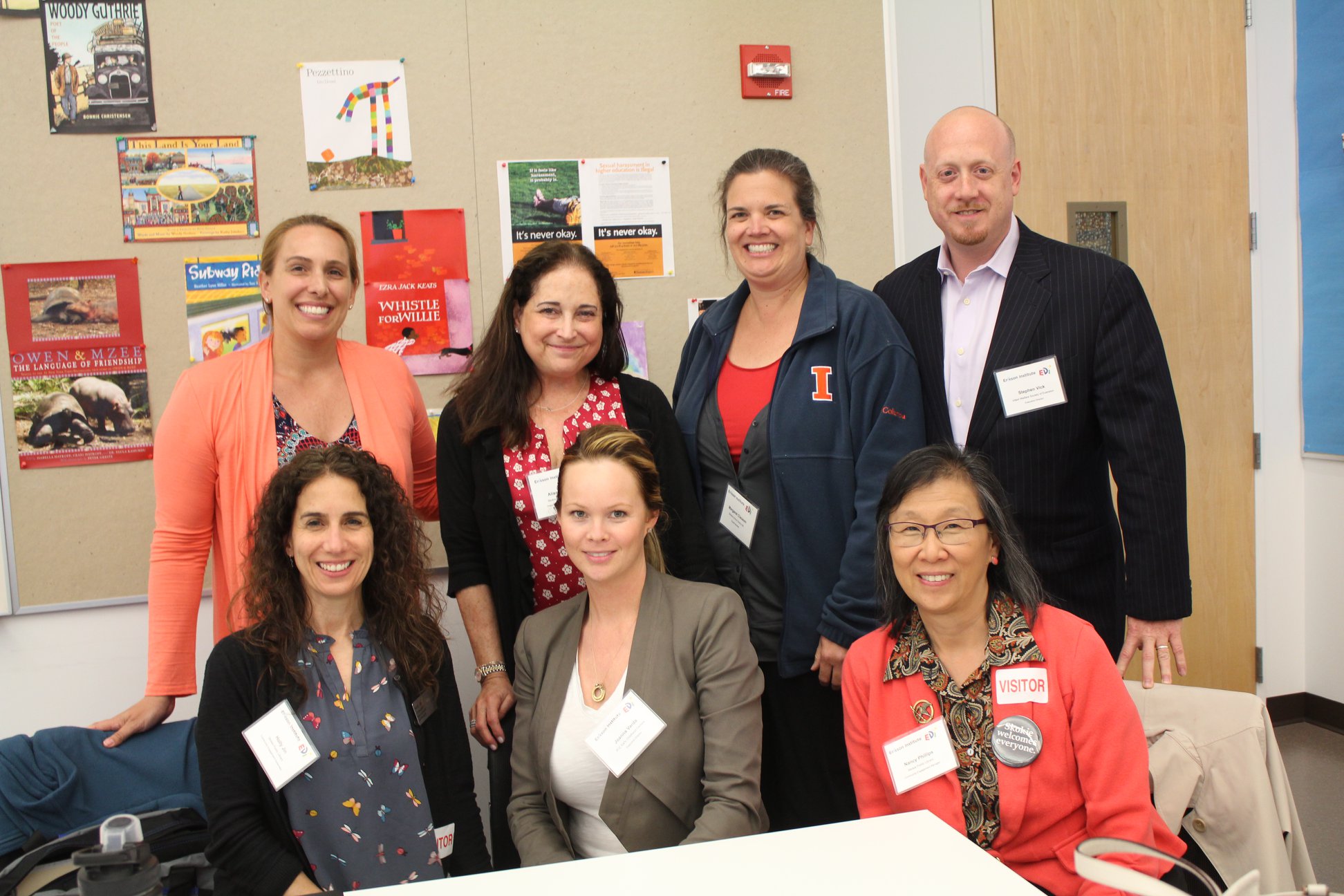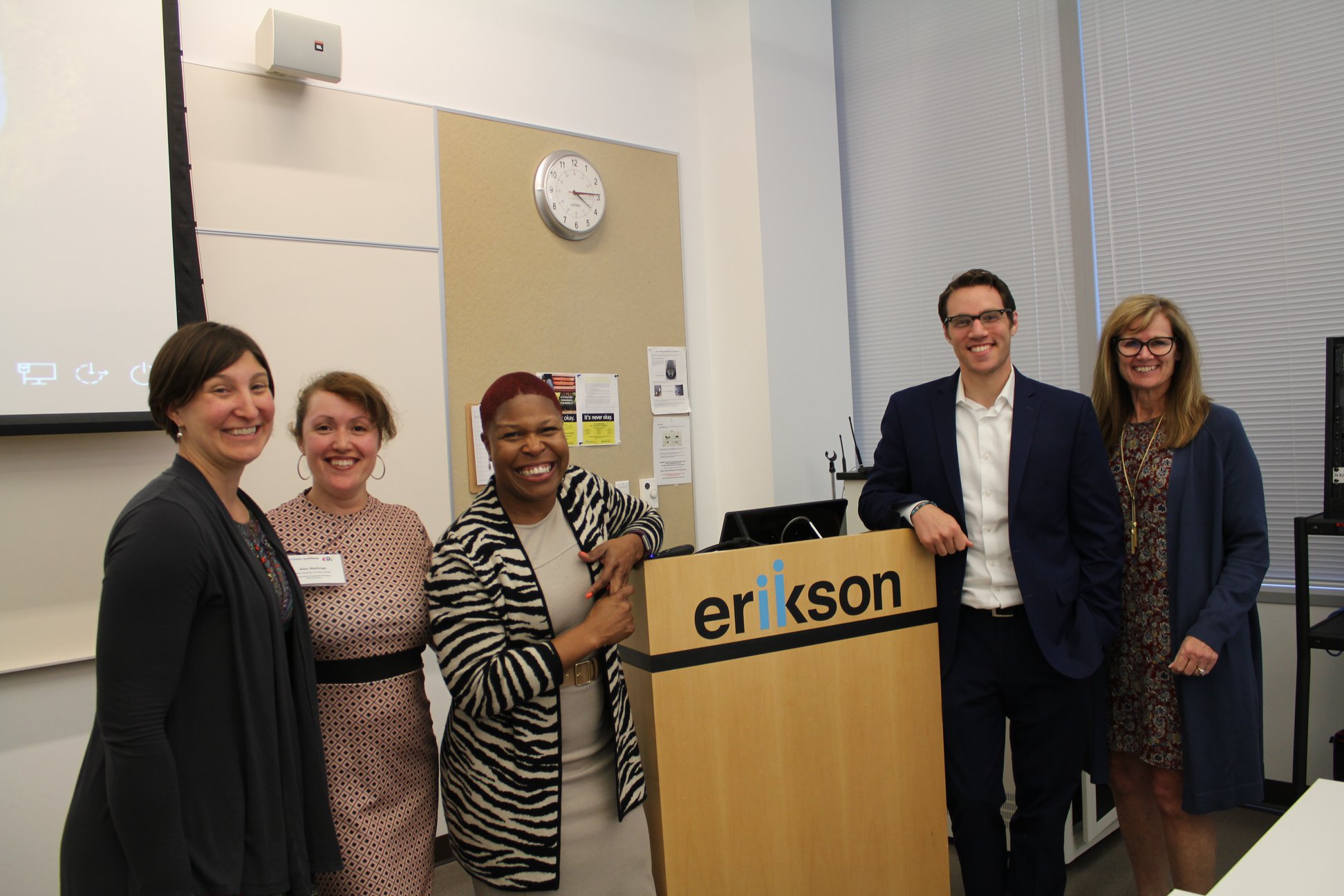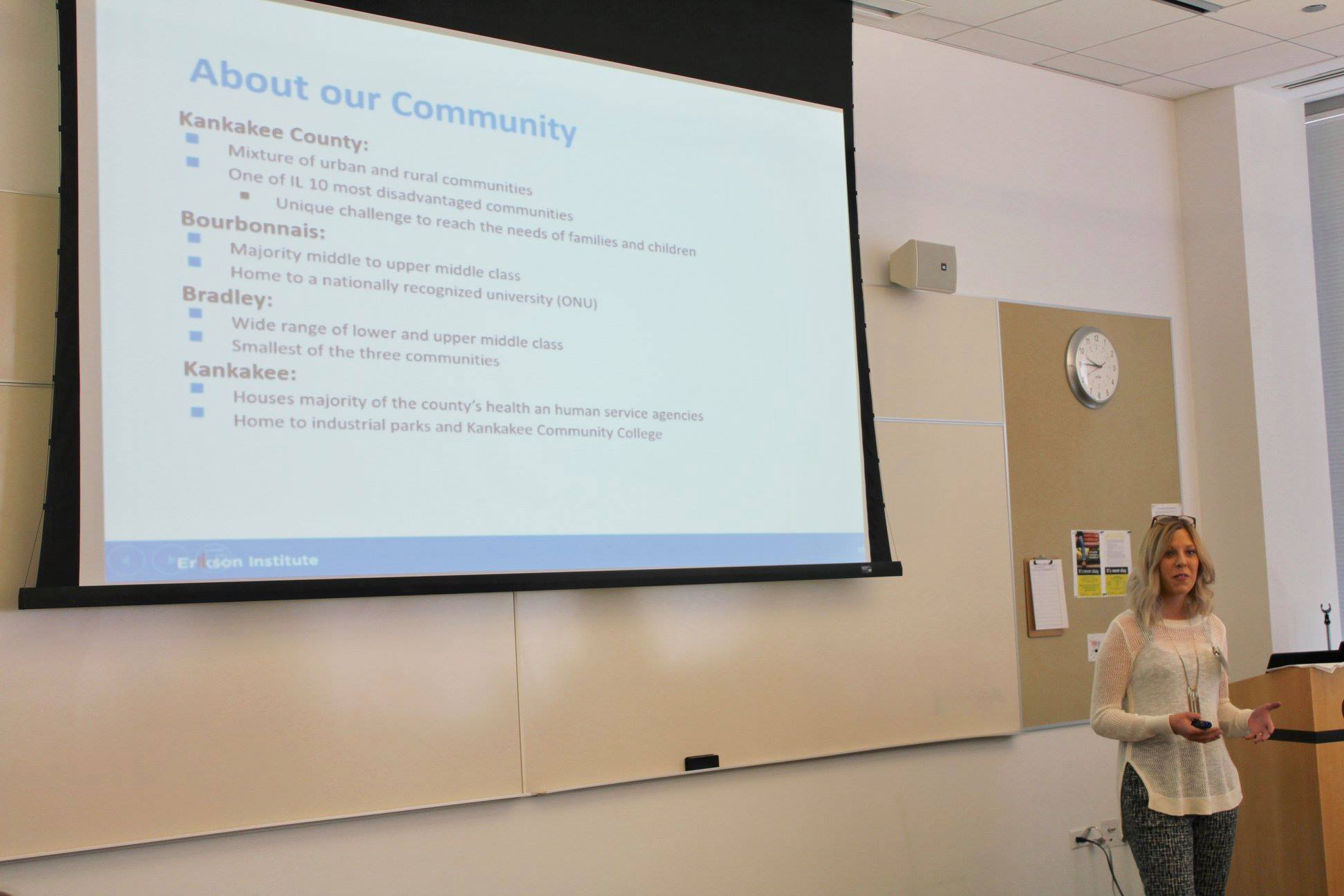EDI Inquiry Questions

Skokie/Morton Grove photo: Representatives from the Village of Skokie and Morton Grove attend the EDI Summit in May 2018 to learn more about the benefits of implementing the EDI in their communities.
The EDI data provides a platform for facilitating discussion and inquiry across sectors on the status of early child development in communities. Conversations should include stakeholders such as community members, parents, teachers, and other interested parties to gain a variety of perspectives. Begin the dialogue by highlighting strengths in the data and identifying long-term trends. Through discussion, patterns begin to emerge that challenge assumptions about childhood vulnerability. The following inquiry questions were developed by Erikson to help facilitate these important conversations as you look through the EDI maps.
What stands out to you on this map?
A wide range of factors including social and economic differences, variations in community networks that support children and families, and also the number, quality and accessibility of programs can explain neighborhood differences.
Where are the strengths located throughout the community?
Investigate the areas that have the lowest concentrations of vulnerability. This can be a great starting point to utilize local and contextual knowledge about what is happening in those neighborhoods, and to understand what lessons can be learned about what is going well.
Where are the gaps in service and opportunities for change located in the community?
The asset maps can be helpful when visually looking at resources in neighborhoods. Conversations are essential to understanding the context of what is going well in the community, where there might be challenges, and if more information is needed to gain a better perspective. The maps can prompt discussion on resource allocation, which requires thoughtful consideration on how to address gaps in services without draining funds from effective initiatives and programs.
What is happening in the neighborhoods that might explain the trends you are noticing?
Conversations about history, structure, racial and ethnic characteristics are all important when thinking about differences and understanding the context of them. Only community members and those with local knowledge can provide insight into the complexity of these factors.
What patterns do you see across the community?
Identifying patterns is one of the keys to deriving meaningful information from the EDI data. Can connections can be made from the different variables?
What other questions do these data raise?
Next steps can be to develop more detailed questions and researching what resources or who can help provide answers.
Equity-Driven Questions
- Are all children being served equitably (or equally)? If not, who needs more support?
- What data do you want to disaggregate (by race, gender, location, etc.) to understand if there are inequities/disparities in your community?
- What changes in existing policies, programs, budgets would reduce racial inequities?
- What steps can ensure input and participation by racial/ethnic stakeholders experiencing risk factors in developing policy and program changes?

